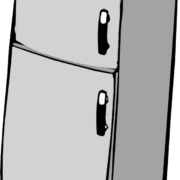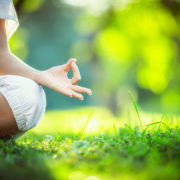Lessons Learned From Clients
 Being a member of the National Association of Professional Organizers (NAPO) is educational and rewarding. As a member I receive valuable training, business support, and resources. One of the best benefits is the collaboration with other Organizers. There are several smaller groups within the association, and one that I belong to is Golden Circle. We meet 4 times a year to discuss a specific topic, to offer each other support, to get to know each other a little better, and to socialize. Last month we met to discuss lessons we’ve learned from our clients. Everyone had such valuable insights to share.
Being a member of the National Association of Professional Organizers (NAPO) is educational and rewarding. As a member I receive valuable training, business support, and resources. One of the best benefits is the collaboration with other Organizers. There are several smaller groups within the association, and one that I belong to is Golden Circle. We meet 4 times a year to discuss a specific topic, to offer each other support, to get to know each other a little better, and to socialize. Last month we met to discuss lessons we’ve learned from our clients. Everyone had such valuable insights to share.
One important lesson I’ve learned is that it’s not easy to accept reality, especially when it means that our dreams are unattainable. For example a client of mine had collected large amounts of books with the dream of spending hours enjoying her books. Although she wanted my help to sort, reduce, categorize, and organize these books, the reality was that her eyesight was going, and she would never be able to read the majority of her books. My practical, organized self, encouraged her to reduce and let go, until she said to me one day, “What if the doctors are wrong, and my eyesight improves?” That is when I realized that she wasn’t giving up on her dream. So, I needed to respect that, and not be a dream crusher. Coincidentally, it was not an easy reality for me to accept.
Here are some lessons we (Professional Organizers from NAPO-NE Golden Circle) have learned from our clients:
- It’s necessary to give up our right to be right.
- We’re like Velcro. We throw out solutions and some stick and some don’t.
- Everyone is good a something.
- We’re done when our clients are done.
- There is value in talking and communicating, not only physically organizing.
- Our clients motivate us to walk the walk, and organize and reduce in our own homes.
- Everyone organizes at their own pace.
- It takes courage to ask for help.
- We never know someone’s whole story.
- If we can remain neutral, we allow our clients to arrive at their own best solution.
- We affect each other in powerful ways.
- We all need personal support in our lives.
- The first step for change is a shift in perspective.
- You’re not a hoarder if you can see the floor.
- Running a home is a business in, and of, itself (the business of living).
- Sometimes it’s about me, the organizer.
- We don’t know what we don’t know.
- Organizing is not always a priority.
- It’s all relative.
- GRATITUDE!
Another lesson I’ve learned is that simple solutions are often the best solutions. To read more, click here.
©June 2016 Janine Cavanaugh, Certified Professional Organizer® All rights reserved



 Did you know that the amount of items you have on your refrigerator can be an indicator of how much clutter you have? So, if your refrigerator is loaded with items, remove 50% of them, and keep them off for at least 3 months. This may motivate you to reduce clutter in other areas in your home as well.
Did you know that the amount of items you have on your refrigerator can be an indicator of how much clutter you have? So, if your refrigerator is loaded with items, remove 50% of them, and keep them off for at least 3 months. This may motivate you to reduce clutter in other areas in your home as well.












Follow Me